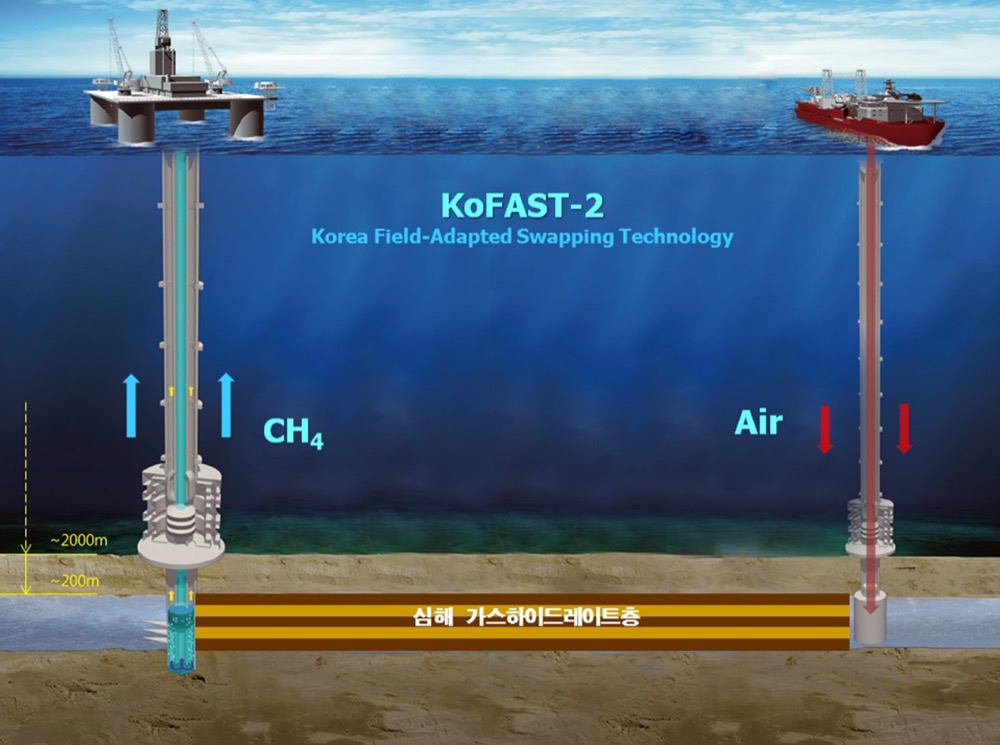The world has still not found a safe and stable way to harness the vast amount of underwater gas hydrate, a potential energy source that far surpasses coal or oil - that is, until now.
A research team composed of Professor Hun Lee, Doctor Dong Yeun Koh, and doctorate candidate Hyery Kang, all from the KAIST Department of Chemical and Biomolecular Engineering, has developed a way of retrieving huge amounts of natural gas from hydrate structures in their ice-crystal form by injecting atmospheric air into the empty space previously occupied by the gas. All of this was done without damaging the local ecosystem or the gas-hydrate layer, a difficulty not overcome until now. This technology catches two birds with one stone by not only unlocking potential underwater energy sources, but also quarantining global warming-inducing carbon dioxide miles below the surface.

This method of production for natural gas is patent-pending, both domestically and internationally; considered as one of Korea’s very own, the technology has been named Korea Field-Adapted Swapping Technology (KoFAST-2). Even outside of Korea, KoFAST has been receiving much recognition. In fact, in April 2012, an American multinational energy corporation called ConocoPhillips successfully extracted natural gas by injecting a hybrid mix of carbon dioxide and nitrogen into North Slope, Alaska, United States, thereby demonstrating the commercial feasibility of KoFAST.
Professor Lee said, “We have made a significant breakthrough in global energy-source development by securing our country the technology to extract and process gas hydrate, a next-generation energy source along with shale gas. I strongly believe that this technology can also play a part in tapping the vast amount of energy buried in the East Sea.”

This research was conducted as part of the Ministry of Trade, Industry & Energy’s Gas Hydrate Project and the Researcher Support Program carried out by the Ministry of Science, ICT and Future Planning and the National Research Foundation of Korea.

